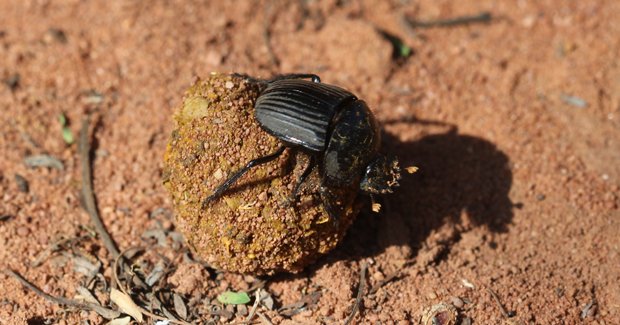AG African safari: The little five

On the second day of the African safari, AG Society administrator Kylie Piper on the lookout, not for the ‘Big Five’, but the little five.
It is our first day on the road and we set off northwards from Pretoria in convoy. The countryside is reminiscent of outback Australia, with prickly acacia and wide brown pastures. The big difference throughout are the rising plateaus and hills that dot the horizon. As we pass the Tropic of Capricorn, a mountain range is apparent in the distance.
LAUNCH THE GALLERY
We will spend the next two nights on the hillside just north of the town of Louis Trichardt in the Limpopo province. We make our way into Soutpansberg or Salt Pan Mountains, the northern most mountain range in South Africa, stretching 180 km in length. The montane forests, now protected, are a small area of dark green amidst the pine forest and managed by the Ministry of Forestry. There are more than 1500 plant species endemic to the area and an overwhelming number of invertebrates that call this area of Africa home.
Our day in the salt pan mountains begins with a drive up the range. As we walk through the cool forest, birds and butterflies flit past. A nerina trogan is spotted amidst the curling vines, a brightly coloured forest bird that’s rarely seen and a highlight for Terry, the avid birder in the group.
It’s back to camp for some breakfast before we are off again, this time into vehicles for a drive through game ranges and past soaring granite cliffs. We pass through blue-gum plantations and scenery that would not be out of place in the Grampians of Victoria or Blue Mountains of NSW. The scenery is stunning and we are on the lookout for animals, not the big five that most would be most familiar with – lion, leopard, buffalo, rhino and elephant – but the little five, some of the more obscure of Africa’s fauna including the buffalo weaver, elephant shrew, leopard tortoise, antlion and the rhino beetle. I have been promised an antlion by our Bertus, our guide, and I search furiously for any small creature that crosses our path.
A group of black grasshoppers with fluorescent green and yellow markings fall over each other. Literally hundreds of the small creatures pass next to our vehicle, scrambling to get where they are going, making the grass look like it is slowly moving up the hillside. As we stop to look at a traditional Venda hut, the mud walls covered with delicate designs, we are interrupted by a giant zebra millipede with a cascade of legs of bright orange.
As we walk along the dirt road towards an old chapel in the middle of nowhere, our search for the smallest of the little five ends. A series of antlion mounds, about 1cm in diameter, dot the path. It is the larvae of these the tiny predators that wait in hope for their small prey to wander past and slide slowly into a cunning sandpit trap.
As impressive as this feat of engineering might be, for me, nothing can beat the ingenuity of the dung beetle. Such a diligent little worker, forever rolling his treasure (and his lady) homeward bound – only stopping to check his direction, surely a navigator of note is this tiny beast.
VIDEO: The cunning trap of the antlion
LINKS
2011 AG Society African expedition
Africa 2011 PDF flyer
RELATED STORIES

